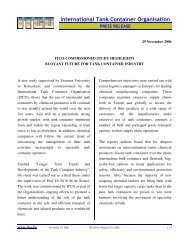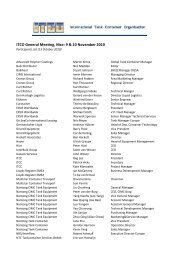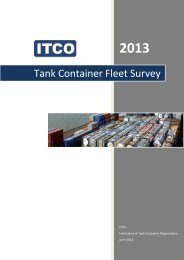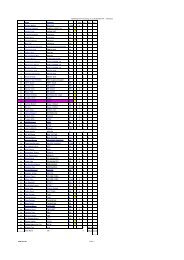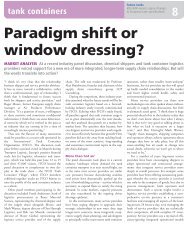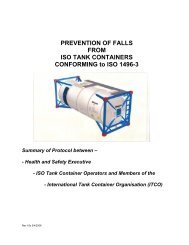You also want an ePaper? Increase the reach of your titles
YUMPU automatically turns print PDFs into web optimized ePapers that Google loves.
ICHCA International <strong>Safe</strong>ty Panel Briefing Pamphlet No 30<br />
5.7.2 Access Ladders<br />
5.7.2.1 The tank containers shown in this pamphlet generally have an access ladder<br />
built into the end frame as shown in Picture 40 and Picture 41. It should be<br />
remembered that the ladder should only be used when suitable steps or an<br />
access platform adjacent to the tank container is not available. See section<br />
13.<br />
5.7.3 Insulation<br />
Picture 40 Picture 41<br />
5.7.3.1 Insulated tank containers will generally<br />
be enclosed in a preformed insulation<br />
material or wrapped in insulation matting.<br />
Both types <strong>of</strong> insulation will be then<br />
covered with either a GPR, stainless<br />
steel or an aluminium cladding jacket.<br />
Note: The cladding / insulation<br />
material is not designed to<br />
withstand a person standing on<br />
it. Picture 42 is an example <strong>of</strong><br />
the warning signs typically fitted.<br />
Standing on the cladding may<br />
damage it and there is a risk <strong>of</strong><br />
falling.<br />
5.7.4 Heating and Cooling<br />
5.7.4.1 The majority <strong>of</strong> insulated tank<br />
containers will have some form <strong>of</strong><br />
heating capability. The principle means<br />
<strong>of</strong> applying the heat is by steam, hot<br />
water or hot glycol being piped through<br />
heating coils welded directly onto the<br />
exterior <strong>of</strong> the barrel. Inlet and outlet<br />
connections should be clearly marked<br />
(see Picture 43).<br />
Picture 42<br />
5.7.4.2 Hot water/hot glycol heating systems<br />
Picture 43<br />
have a covered trough filled with the<br />
appropriate liquid. An electrical heating coil is immersed in the trough and a<br />
thermostat switches on an electric pump to circulate the heated liquid<br />
through the steam coil. Some tanks have a separate coil for the heated<br />
liquid. Glycol is <strong>of</strong>ten preferred because for example it has a lower freezing<br />
temperature than water.<br />
Page 21 ©ICHCA International Limited



